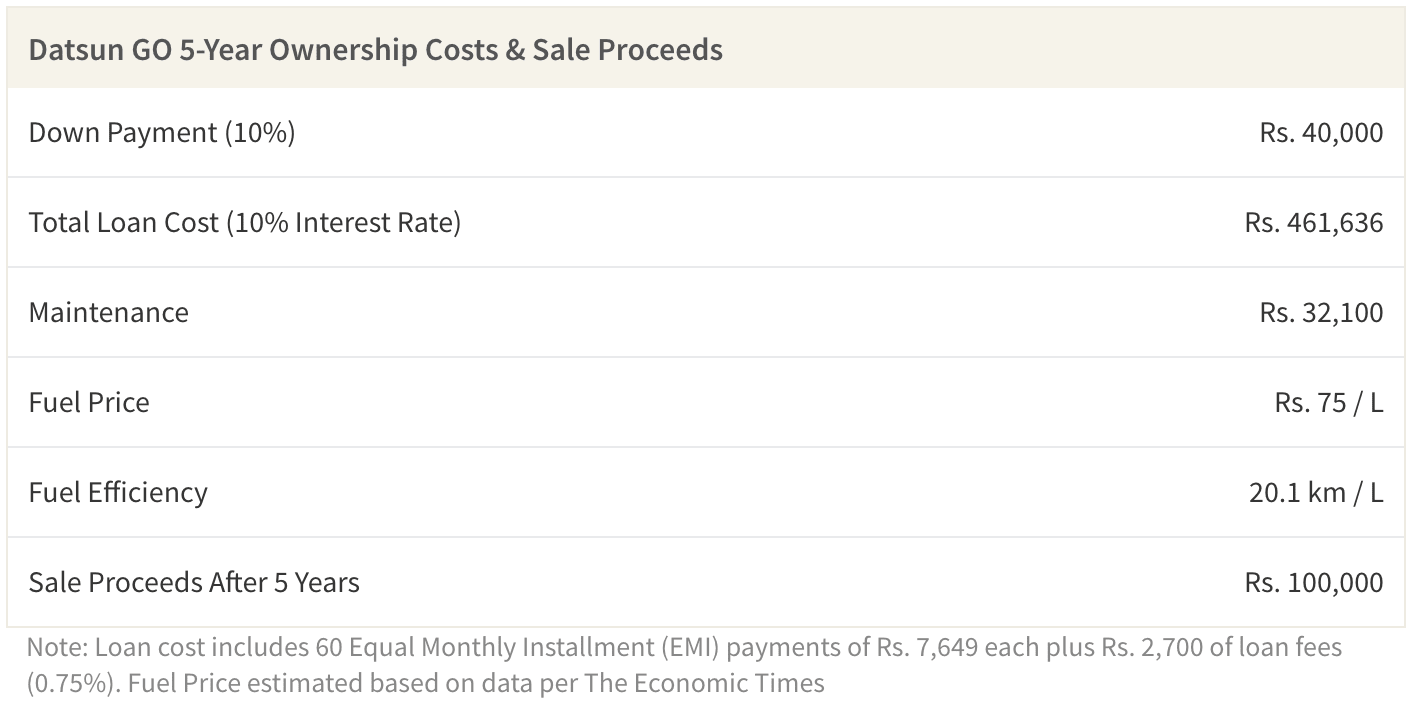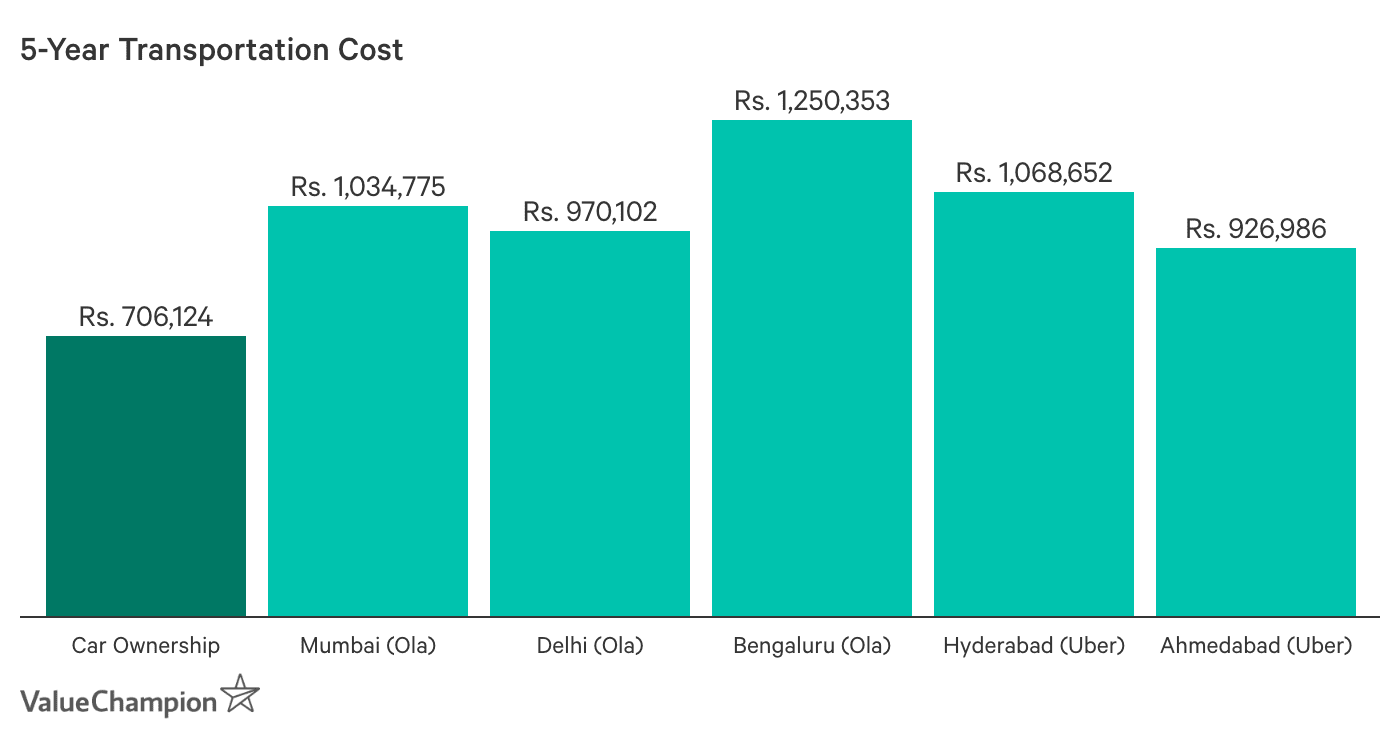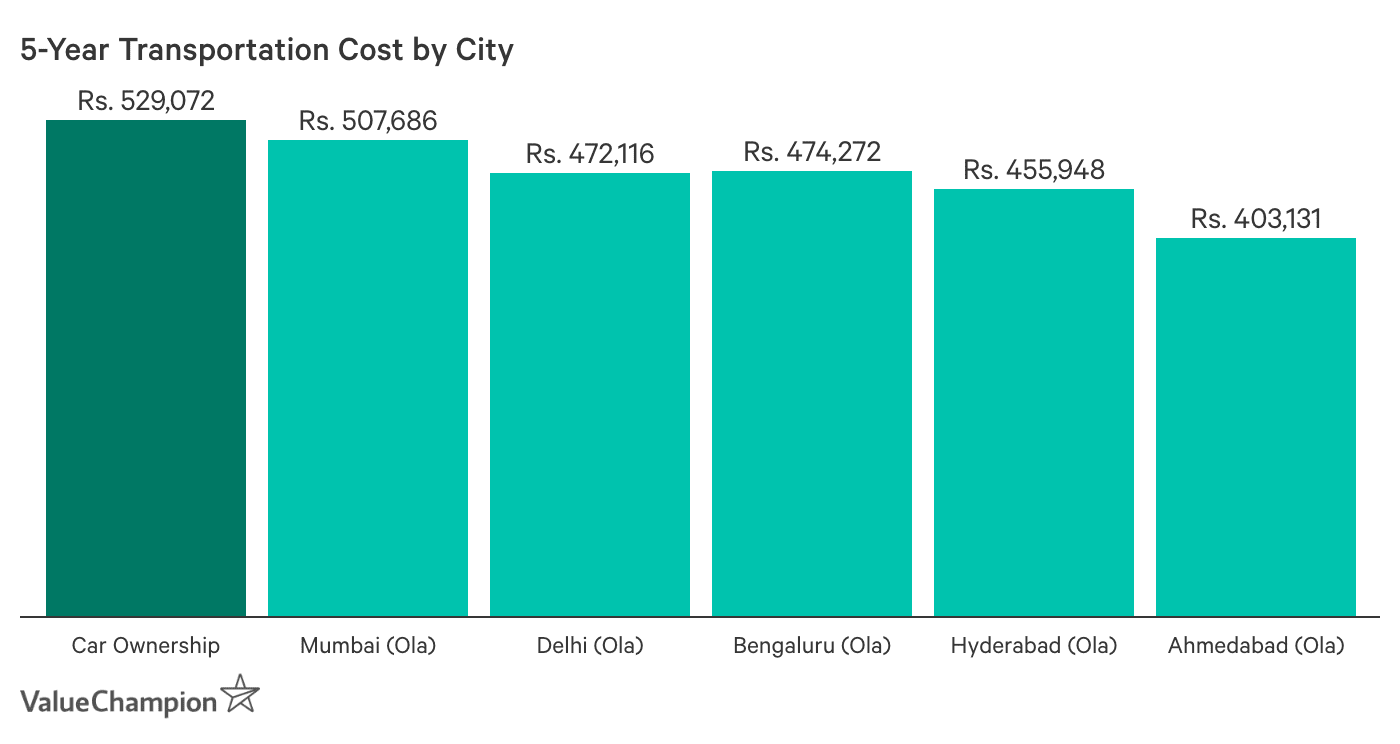Ridesharing involves a lot of micro-transactions, but how does it compare to the one-time purchase of a car?

As Uber and Ola continue to grow and compete for rider demand in India, some may wonder which is the cheaper ride hailing service to call when they need a lift.
However, a much bigger question is whether one could substitute ride hailing everyday for car ownership altogether. This is a complex question that depends on multiple different variables particular to one’s unique situation.
To provide some guidance in answering the question, we compared the monthly cost of using UberGo or Ola Micro everyday to the costs associated with purchasing a similar vehicle, namely a Datsun GO.
Car Ownership Wins for Medium/Long Average Distances, RideShare Wins for Short Average Distances
Upon running through various scenarios, we found that car ownership may be more affordable if one typically drives medium-to-long distances, such as around 20km, while ridesharing may be more affordable if one typically drives short distances around 7km or less.
However, these findings require a bit of explanation because the cost of car ownership depends primarily on the on-road price of the vehicle, the loan one takes out (if necessary), maintenance costs and fuel efficiency & prices.
To explore our question, we assume an individual buys a Datsun GO for Rs. 400,000 and takes out a 5-year car loan with a 10% interest rate.
Also Read: Shopee takes aim at Lazada with live streaming play
Second, while the Datsun GO requires Rs. 32,100 of maintenance over 6 years, we conservatively assume this full cost is incurred over 5 years to account for potential car issues, which can be common for vehicle owners.
Last, we assume an owner could conservatively recover Rs. 100,000 by selling the car after 5 years.

Medium/Long Average Trips – Car Ownership Wins
For an individual who typically takes medium-to-long trips, we found that car ownership is 24-44% cheaper than ridesharing over 5 years depending on location.
For this case, we assume an individual takes an average of two 20-km trips (lasting 40 minutes) per day over 5 years, which would require Rs. 149 of fuel cost per day. On top of the abovementioned expenses, car ownership would cost Rs. 706,124 over 5 years.
In contrast, UberGo or Ola Micro would cost an average of Rs. 1,050,173 in India’s 5 largest cities, assuming the rider experiences 1.5x surge pricing 25% of the time.

Short Average Trips – RideShare Wins
On the other hand, if someone typically takes short trips, we found rideshare is 4-24% cheaper than car ownership over 5 years depending on location. In this case, we assumed that the individual’s twice-daily rides are only 7 km (lasting 15 minutes).
Due to the lower distance, the 5-year cost of car ownership declines by 25% to Rs. 529,072, reflecting lower fuel consumption.
However, the cost of riding Uber or Ola everyday becomes 56% cheaper versus the first case, illustrating that rideshare cost is very dependent on how much one uses it.

Is RideShare a Feasible Replacement?
Our exercise suggests rideshare may only be a feasible replacement for car ownership if one typically travels short distances on a regular basis. Of course, the cost considerations we examined could vary greatly by individual, and a few others to consider could be car upgrades, parking prices or cost-saving rideshare subscriptions.
Additionally, one could surely supplement car ridesharing with motorbike ridesharing, buses or rickshaws. Purchasing one’s own motorbike could be another, cheaper option for vehicle ownership, too. Apart from financial costs, someone may find car ownership provides more flexibility, while others may find it burdensome.
Or, someone else may feel safer owning a personal vehicle versus riding with strangers. In all, one should carefully examine one’s specific circumstances when making this decision.
How to Get the Most Value Out of Car Ownership and RideShare
Using a credit card responsibly for all possible purchases ensures one gets the most value back on spending. Further, one could consider a subscription with Uber or Ola to save money.
Use a Credit Card
In general, using a credit card to pay for daily purchases, including rideshares, is the best way to get the most out of your spending due to the valuable rewards offered like cashback, airline miles or even fuel rewards.
It might even be possible to use one’s credit card for a car down payment, but make sure to do so responsibly. It’s possible to incur a fee for this type of transaction, so make sure it wouldn’t outweigh the rewards received.
RideShare Subscriptions
Using one’s Paytm wallet, one can buy a Ride Pass within the Uber app for assured trip savings. This program also comes along with discounts on UberEats and offers on flights and movies. However, Uber does not disclose comprehensive numbers on its website, so it appears savings and pricing vary by individual and location.
Also Read: Temasek, Tencent inject US$35M into open-banking software company TrueLayer
Second, with Ola Select a rider gets no surge pricing on certain vehicle types, booking queue priority, Prime Sedan for the price of Mini and free Wi-Fi. Last, Ola Share Pass allows a rider to lock in the same fare each day (no surge) within a city.
As with Uber, it appears one would need to check the Ola app for pricing on both of these subscriptions.
—
Photo by Sri Jalasutram on Unsplash
This article originally appeared on ValueChampion’s blog
The post In India, should you buy a car or just Uber/Ola everywhere? appeared first on e27.